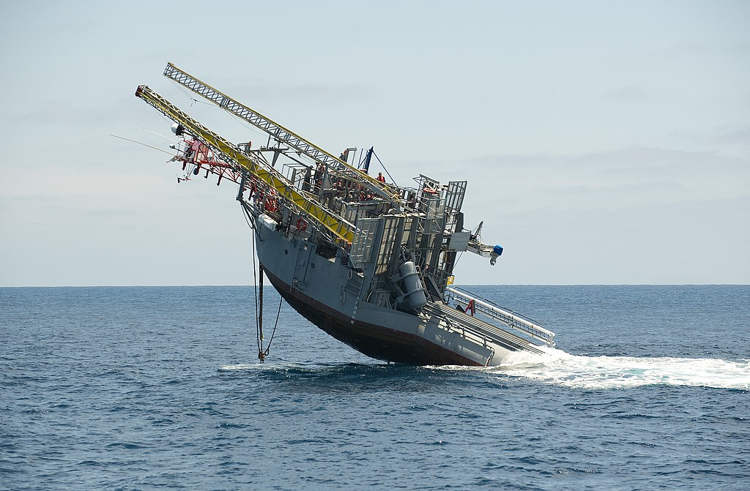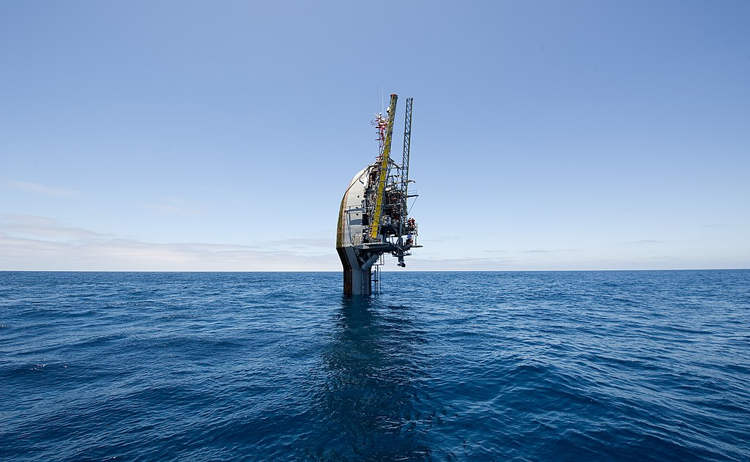|
The aptly-named R/P FLIP is an open ocean research platform that can
flip between the horizontal and vertical position at the flip of a
button and is often mistaken for a capsizing ship.
Owned by the U.S. Office of Naval Research, the FLIP (short for
‘floating instrument platform’) is a 108-meter-long ocean research
platform designed to partially flood and pitch backward 90°, leaving
only the 17-meter end above water, in a vertical position, with the
bulkheads acting as decks. Because most of the ballast for the platform
is actually ocean water at depths below the influence of surface waves,
the R/P FLIP behaves like a buoy, which means it is virtually immune to
wave action. The platform’s hull is designed to resist twisting. After
its mission is complete, compressed air is pushed into the large ballast
tanks, causing the entire platform to flip back into a horizontal
position.
|
|
 |
|
The development of the R/P FLIP platform began in 1960, inspired by a
conversation between researcher Frederick H. Fisher and the director of
the Marine Physical Laboratory, Fred N. Spiess. The former was
complaining about stability issues when using a submarine to conduct his
research, which made Spiess recall a suggestion that upending a ship
might make it more stable. That sparked a discussion about the
feasibility of such a ship, and in June of 1962, the Gunderson Brothers
Engineering Company in Portland, Oregon launched the FLIP.
The FLIP can float freely in open waters, or it can be moored to the
bottom of the ocean at depths of up to 5,000 meters, an operation that
takes an entire day to complete as well as 50 tonnes of equipment.
Fliping from a horizontal to a vertical position, on the other hand,
takes less than 30 minutes.
Interestingly, because of the potential interference with its highly
sensitive acoustic instruments, the R/P FLIP does not have its own means
of propulsion, so it must be towed by another vessel. It weighs around
700 tonnes and can accommodate a crew of five, plus up to eleven
scientists.
|
 |
|
As you can imagine, the interior needed some customization in order to
be functional in both horizontal and vertical positions. For example,
the toilet seats can flip 90°, and the shower heads are curved 90°.
Also, overhead lights had to be installed on the surfaces that act as
ceilings in both orientations. Walking inside the FLIP can feel bizarre,
with doors and hatches sticking out from the floor and portholes in the
ceiling.
When it comes to stability in the open ocean, an extremely important
condition for the kinds of research FLIP is used for, no other platform
even comes close to this wonder of engineering. The only other vessels
able to compete with it in that department are submarines. |